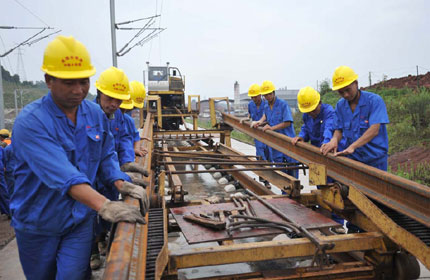Dispelling distrust across the Pacific
Updated: 2014-07-10 07:26
By Shen Dingli (China Daily)
|
|||||||||||
S&ED will boost economic collaboration, but China and the US should also strive for results from their talks on strategic issues
Given the complicated bilateral relations between China and the United States, the ongoing sixth round of their Strategic and Economic Dialogue taking place in Beijing offers a timely opportunity for Beijing and Washington to exchange views on crucial economic and security issues of mutual concern.
The S&ED has been designed, as its name suggests, for the two countries to discuss both economic and strategic matters. But over the past five rounds of talks, the economic aspect has tended to overshadow the strategic one, as military and security issues are typically more sensitive than economic and trade ones. Each of the previous dialogues yielded a long list of areas for greater cooperation, ranging from climate change to energy security, and from trade balancing to investment.
This round of talks is expected to do the same, and the representatives from both China and the United States will be pushing for more collaboration on the economic front. Since China's economic growth is slowing quite appreciably, Beijing is now looking to deepen its economic reform. Over a couple of years reform has been launched in 60 major areas, covering over 300 tangible items, and the government has said it will allow market forces to play a more decisive role in the economy. This will offer new opportunities to US businesses.
In addition, with its proposals of a Silk Road Economic Belt as well as the 21st Century Maritime Silk Road, China is trying to project more economic interaction and collaboration with its Asian neighbors and beyond. Lately Beijing has put forward its proposal to create an Asian Investment Bank of Infrastructure Development, offering collective financial resources that promise to be trillions of US dollars to advance Asia's infrastructure. By working together, Beijing and Washington can contribute as well as benefit from Asia's prosperity buildup.
This round of the S& ED is also due to address the divergences in economic policies between China and the US. The US' rebalancing to the Asia-Pacific and its Trans-Pacific Partnership could potentially undermine China's competitiveness. China needs to boost its economic development and accelerate its efforts to move higher up the value chain. The aim is to promote a smooth transition where China incrementally improves its economy through cooperation and constructive competition, and the S& ED is a way of managing the cooperation and competition with the US.
However, the S& ED has yet to play such a positive role in managing their differences on security issues. Among a long list of issues on which the two countries differ, the maritime disputes in the East and South China seas and cybersecurity are the two most pressing at present. The US views China as destabilizing the status quo by pushing the envelope with regard to the territorial disputes in the East China Sea and South China Sea. While China perceives Japan's "nationalizing" of the main Diaoyu Islands as changing the status quo. Given the fact that both Hanoi and Manila used to admit that China has sovereignty over all islands and islets on the Chinese side of the Nine-Dash Line in the South China Sea, Beijing deems the Philippines' occupation of some of these islands as unacceptable. Unless there is some real engagement among the various parties, tensions are likely to continue to rise.
As the US is an ally of both Japan and the Philippines and has made itself an interested party in the disputes, Beijing and Washington should use this round of the S& ED to discuss risk avoidance and ways to take some of the steam out of the current tensions.
Related Stories
China-US investment treaty on fast track 2014-07-10 06:52
China, US unite against illegal wildlife trafficking 2014-07-10 07:24
Minister: US 'key' to global recovery 2014-07-10 03:06
US aircraft carrier to make port call to S.Korea 2014-07-09 17:55
Today's Top News
Van Gaal: I taught Romero how to stop penalties
Snowden files asylum extension
Israel steps up offensive, 53 die
Leading lady a true legend
UN chief calls for political horizon
For Brazil fans, a debacle worse than 1950
Tesla faces suit over trademark
Rich eye overseas game hunting
Hot Topics
Lunar probe , China growth forecasts, Emission rules get tougher, China seen through 'colored lens', International board,
Editor's Picks

|

|

|

|

|

|





